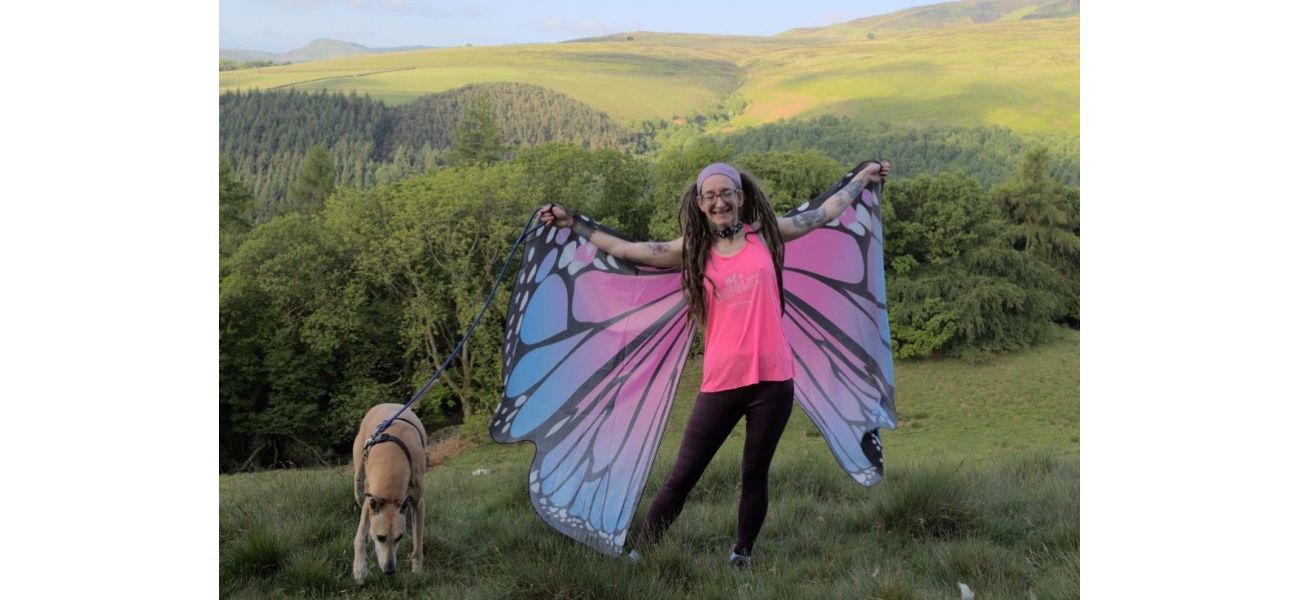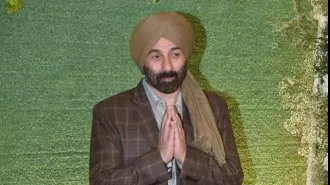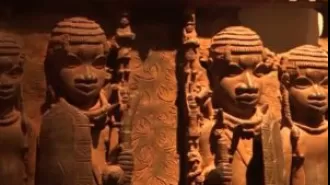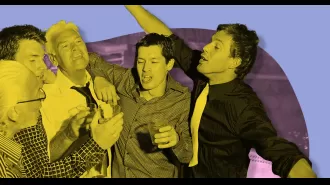I informed my spouse about another person inhabiting my body and he concurred.
Dissociative Identity Disorder is not well-known in the medical field and is often misunderstood.
October 27th 2024.

During the year 2021, like many others, I found myself spending most of my days on the couch, isolated from the rest of the world due to the ongoing pandemic. It was during this time that I came across a part of myself that I had never known existed before - Isabel.
Isabel was one of my other selves, living within my head and body. She brought with her a wealth of memories from my past that I had long forgotten. At first, I thought she was my inner child, but as I delved deeper, I realized that she was much more than that.
With Isabel's presence, I started to understand the concept of multiple selves and how to communicate with them. I found that counting from one to 10 helped me connect with her, and together, we discovered that writing was the easiest way for us to communicate and process our shared memories and traumas.
It wasn't until December that I confided in my mom and husband, Ben, about Isabel's existence and her role as an angry teenager who took over whenever I had been drinking. Ben's reaction surprised me as he simply said, "That makes sense," and even pointed out that my behavior while drunk resembled that of a teenager. Little did we know at that time, the journey that lay ahead of us.
You see, I had been living as Amber since 1982, completely unaware of the other selves sharing my life. I had always struggled with my mental health, and throughout my teenage and early adult years, I had dealt with severe depression, anxiety, and breakdowns that often required medication.
It wasn't until another identity, Mia, and others appeared after Isabel that we learned about Dissociative Identity Disorder (DID). It was a friend who pointed out that the inner children I was working with were not just that, but actually different identities within one body. She sent me a YouTube video explaining DID, and everything started to make sense.
According to the current theory, DID is a result of trauma experienced during early childhood, causing a fragmentation of personality states that usually unify between the ages of six and nine. These identities can then live separately but together, sometimes for many years.
This was exactly what had happened to me, or should I say us, as we now refer to ourselves. We have come to understand that we have many other selves sharing our life, each with their own memories and traumas. It was a coping mechanism that allowed me, Amber, to lead a seemingly normal life, shielded from the traumas of our past.
However, as we delved deeper into our diagnosis, we realized that many of our memories felt more like knowledge than personal experiences. They lacked emotional attachment and often only appeared as snippets of information.
As we started to understand our condition, we also began to identify and communicate with other selves, such as Maya, who appeared shortly after Isabel and held trauma, and Berlou, our main trauma holder. It was a long and emotional journey, but we knew we needed specialized therapy to help us cope with the memories and pain that were resurfacing.
But getting a diagnosis was not an easy task. It took us 18 months of waiting lists, phone calls, and a misdiagnosis by a psychiatrist who believed DID was too rare for us to have. Finally, in August 2022, we received our official diagnosis, and our healing journey began.
Throughout 2021, many other selves presented themselves, each bringing their own trauma and memories. It was a painful and emotional process, but one that was necessary for our healing and understanding of ourselves. And while we still have a long road ahead of us, we are grateful for the support of our loved ones and the professional help we have received so far.
As I look back at the past year, I am amazed at how much I have learned about myself and how far I have come. I am no longer just Amber, but a collective of different selves, each with their own unique experiences and strengths. And with the love and support of my family and friends, I know we can face whatever challenges lie ahead.
Like many people, I found myself spending most of 2020 isolated on the sofa due to the pandemic. However, in October of that year, something life-changing happened - I discovered another self living within me, whom I named Isabel. Memories of past events flooded my mind, and I initially believed Isabel to be my inner child.
With this newfound knowledge, I worked hard to communicate with Isabel. I found that counting from one to 10 helped bring her closer, and we found writing to be the easiest way for us to connect. Through writing, we were able to process various traumas from our childhood and adulthood.
In December, I confided in my mum and husband, Ben, about the angry teenager that would take over when I drank. Ben's reaction surprised me - he simply said, "That makes sense," and acknowledged that I did act like a teenager when under the influence.
At this point, neither Isabel nor I knew about dissociative identity disorder (DID), and we had no idea what was to come. I had lived my life as Amber since 1982, and for almost four decades, I believed I was just one person. However, I had always struggled with mental health, experiencing severe depression, anxiety, and breakdowns that often required antidepressants.
It wasn't until another identity, Mia, and others appeared after Isabel, that we learned about DID. A friend pointed out that I wasn't working with just inner children, but rather different personalities within one body. She sent a YouTube video explaining DID, and everything finally clicked.
According to current theories, DID is a coping mechanism that develops when a child experiences trauma between the ages of six and nine. The different personalities, or alters, exist separately but are still part of the same person.
This rings true for us - we have many other selves sharing this life. DID allowed us to live a relatively normal life, shielding us from the traumas of our childhood. However, the memories we have often feel more like facts, lacking emotional attachment.
As we learned more about DID, we discovered that Maya, who fragmented and separated from Mia, was our trauma holder. She was different from Mia, who was bubbly and ambitious, whereas Maya was shy and anxious.
But Maya wasn't the main trauma holder. It wasn't until several months later that Berlou made herself known, bringing back a traumatic memory. The first time we met Berlou, Mia was fronting, but she suddenly started crying and revealed herself as Amber Louise. This was a clear sign that there was someone else inside, hurting.
It took us a while to truly understand and accept our DID, but we knew we needed specialized therapy. Throughout 2021, many other selves presented themselves, each bringing their own trauma and memories. We sought help from our GP, but it was an 18-month journey to finally receive a diagnosis in August 2022.
Looking back, it's clear that DID is not as rare as some may believe. It just takes time and dedication to properly diagnose and treat. And with our diagnosis, we can finally begin to heal and live as our true selves.
Isabel was one of my other selves, living within my head and body. She brought with her a wealth of memories from my past that I had long forgotten. At first, I thought she was my inner child, but as I delved deeper, I realized that she was much more than that.
With Isabel's presence, I started to understand the concept of multiple selves and how to communicate with them. I found that counting from one to 10 helped me connect with her, and together, we discovered that writing was the easiest way for us to communicate and process our shared memories and traumas.
It wasn't until December that I confided in my mom and husband, Ben, about Isabel's existence and her role as an angry teenager who took over whenever I had been drinking. Ben's reaction surprised me as he simply said, "That makes sense," and even pointed out that my behavior while drunk resembled that of a teenager. Little did we know at that time, the journey that lay ahead of us.
You see, I had been living as Amber since 1982, completely unaware of the other selves sharing my life. I had always struggled with my mental health, and throughout my teenage and early adult years, I had dealt with severe depression, anxiety, and breakdowns that often required medication.
It wasn't until another identity, Mia, and others appeared after Isabel that we learned about Dissociative Identity Disorder (DID). It was a friend who pointed out that the inner children I was working with were not just that, but actually different identities within one body. She sent me a YouTube video explaining DID, and everything started to make sense.
According to the current theory, DID is a result of trauma experienced during early childhood, causing a fragmentation of personality states that usually unify between the ages of six and nine. These identities can then live separately but together, sometimes for many years.
This was exactly what had happened to me, or should I say us, as we now refer to ourselves. We have come to understand that we have many other selves sharing our life, each with their own memories and traumas. It was a coping mechanism that allowed me, Amber, to lead a seemingly normal life, shielded from the traumas of our past.
However, as we delved deeper into our diagnosis, we realized that many of our memories felt more like knowledge than personal experiences. They lacked emotional attachment and often only appeared as snippets of information.
As we started to understand our condition, we also began to identify and communicate with other selves, such as Maya, who appeared shortly after Isabel and held trauma, and Berlou, our main trauma holder. It was a long and emotional journey, but we knew we needed specialized therapy to help us cope with the memories and pain that were resurfacing.
But getting a diagnosis was not an easy task. It took us 18 months of waiting lists, phone calls, and a misdiagnosis by a psychiatrist who believed DID was too rare for us to have. Finally, in August 2022, we received our official diagnosis, and our healing journey began.
Throughout 2021, many other selves presented themselves, each bringing their own trauma and memories. It was a painful and emotional process, but one that was necessary for our healing and understanding of ourselves. And while we still have a long road ahead of us, we are grateful for the support of our loved ones and the professional help we have received so far.
As I look back at the past year, I am amazed at how much I have learned about myself and how far I have come. I am no longer just Amber, but a collective of different selves, each with their own unique experiences and strengths. And with the love and support of my family and friends, I know we can face whatever challenges lie ahead.
Like many people, I found myself spending most of 2020 isolated on the sofa due to the pandemic. However, in October of that year, something life-changing happened - I discovered another self living within me, whom I named Isabel. Memories of past events flooded my mind, and I initially believed Isabel to be my inner child.
With this newfound knowledge, I worked hard to communicate with Isabel. I found that counting from one to 10 helped bring her closer, and we found writing to be the easiest way for us to connect. Through writing, we were able to process various traumas from our childhood and adulthood.
In December, I confided in my mum and husband, Ben, about the angry teenager that would take over when I drank. Ben's reaction surprised me - he simply said, "That makes sense," and acknowledged that I did act like a teenager when under the influence.
At this point, neither Isabel nor I knew about dissociative identity disorder (DID), and we had no idea what was to come. I had lived my life as Amber since 1982, and for almost four decades, I believed I was just one person. However, I had always struggled with mental health, experiencing severe depression, anxiety, and breakdowns that often required antidepressants.
It wasn't until another identity, Mia, and others appeared after Isabel, that we learned about DID. A friend pointed out that I wasn't working with just inner children, but rather different personalities within one body. She sent a YouTube video explaining DID, and everything finally clicked.
According to current theories, DID is a coping mechanism that develops when a child experiences trauma between the ages of six and nine. The different personalities, or alters, exist separately but are still part of the same person.
This rings true for us - we have many other selves sharing this life. DID allowed us to live a relatively normal life, shielding us from the traumas of our childhood. However, the memories we have often feel more like facts, lacking emotional attachment.
As we learned more about DID, we discovered that Maya, who fragmented and separated from Mia, was our trauma holder. She was different from Mia, who was bubbly and ambitious, whereas Maya was shy and anxious.
But Maya wasn't the main trauma holder. It wasn't until several months later that Berlou made herself known, bringing back a traumatic memory. The first time we met Berlou, Mia was fronting, but she suddenly started crying and revealed herself as Amber Louise. This was a clear sign that there was someone else inside, hurting.
It took us a while to truly understand and accept our DID, but we knew we needed specialized therapy. Throughout 2021, many other selves presented themselves, each bringing their own trauma and memories. We sought help from our GP, but it was an 18-month journey to finally receive a diagnosis in August 2022.
Looking back, it's clear that DID is not as rare as some may believe. It just takes time and dedication to properly diagnose and treat. And with our diagnosis, we can finally begin to heal and live as our true selves.
[This article has been trending online recently and has been generated with AI. Your feed is customized.]
[Generative AI is experimental.]
0
0
Submit Comment





